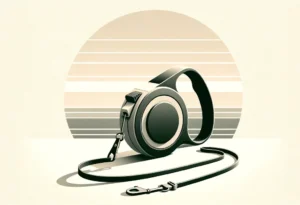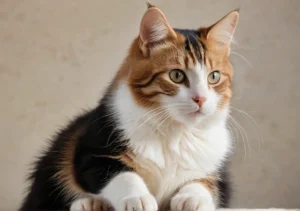Have you ever wondered why your cat’s claws seem to grow at lightning speed? It can be frustrating to constantly hear the click-clack of their nails on the floor, prompting the question: why do my cat’s claws grow so fast? Let’s explore the reasons behind this rapid growth and what you can do to help keep them in check.
Cats, unlike humans, have retractable claws that they use for various activities such as hunting, climbing, and marking their territory. The constant use of their claws naturally wears them down, but they also grow continuously to compensate for this wear and tear. Additionally, cats have a protein called keratin in their claws, which is the same protein found in human hair and nails. This protein helps their claws grow quickly and stay strong.
The Role of Genetics in Claw Growth
Genetics play a significant role in determining the rate at which your cat’s claws grow. Just like humans inherit certain traits from their parents, cats also inherit genetic factors that can influence the growth of their claws. Some cats may naturally have faster-growing claws due to their genetic makeup, while others may have slower-growing claws. This genetic predisposition can vary from cat to cat, so don’t be surprised if your furry friend’s claws seem to grow at a different rate compared to other cats.
Diet and Nutrition Effects on Claw Growth
Believe it or not, your cat’s diet and nutrition can have a big impact on the growth of their claws. A balanced and nutritious diet is essential for overall feline health, including the health of their claws. A diet rich in protein and essential vitamins and minerals can help promote healthy claw growth. On the other hand, a poor diet lacking in essential nutrients may result in slower claw growth or brittle claws that are more prone to breaking. Make sure to provide your furry friend with high-quality cat food that meets their nutritional needs to support healthy claw growth.
- Omega-3 fatty acids are particularly beneficial for maintaining healthy claws, so consider incorporating omega-3 supplements into your cat’s diet.
- Water intake is also crucial for overall hydration and claw health, so make sure your cat has access to fresh water at all times.
Remember, just like humans, cats need a balanced diet to thrive, and this includes keeping their claws in tip-top shape. By paying attention to your cat’s diet and ensuring they receive the necessary nutrients, you can help support healthy claw growth and overall feline wellness.
Environmental Factors and Claw Maintenance
Cats’ claws grow fast due to various environmental factors. A cat’s indoor or outdoor environment can affect the wear and tear on their claws. If your feline friend spends most of their time indoors, they might not have natural opportunities to wear down their claws like outdoor cats do. To help manage their claw growth, provide scratching posts or pads for them to use regularly. Keeping these items near their favorite lounging spots can encourage natural scratching behavior and help maintain healthy claw length. Regular nail trims can also be beneficial to keep their claws at a manageable length and prevent overgrowth.
Health Issues and Claw Growth
Abnormal claw growth in cats could be a result of underlying health issues. If you notice your cat’s claws growing excessively fast or abnormally, it may be a sign of a health problem. Conditions like hyperthyroidism or liver disease can cause changes in a cat’s nail growth patterns. If you’re concerned about your cat’s claw growth, it’s essential to consult with your veterinarian for a thorough examination. They can determine if there’s an underlying health issue contributing to the rapid claw growth and recommend appropriate treatment options. Remember, monitoring your cat’s overall health is crucial in maintaining their well-being.
Additional Unique Insight:
– Dietary Influences: A balanced diet plays a vital role in your cat’s overall health, including nail health. Ensure your cat is getting proper nutrition with high-quality cat food to support healthy nail growth. Foods rich in essential nutrients like biotin and zinc can promote strong nails and contribute to healthier claw growth.
Remember, understanding the reasons behind your cat’s fast-growing claws can help you better care for their paws and overall well-being. By keeping an eye on environmental factors, maintaining regular claw maintenance, and addressing any potential health issues, you can ensure your feline friend remains happy and healthy.
Trimming Techniques for Managing Claw Growth
If you’ve ever wondered why your cat’s claws seem to grow at lightning speed, fret not, you’re not alone! Cats’ claws grow fast due to their natural instinct to shed old layers continually. To keep those claws in check, regular trimming is key. Trimming your cat’s claws every 2-4 weeks can help prevent overgrowth and potential issues. When trimming, remember to use cat-specific clippers to avoid splintering or hurting your furry friend. Enlist the help of a friend or family member to hold your cat securely while you trim each claw gently. If you’re unsure how to trim claws properly, consult your vet for a demonstration.
Scratching Posts and Other Tools to Maintain Claws
Dive into your cat’s world and discover why scratching posts are a game-changer in managing claw growth. Cats have an innate need to scratch to maintain claw health and mark territory. By providing quality scratching posts in different materials like sisal, cardboard, or carpet, you can offer your cat a safe and appropriate outlet for scratching. Encourage your kitty to use scratching posts by sprinkling catnip on them or placing them in areas where your cat loves to scratch. Remember, scratching is a natural behavior, so embrace it and watch those claws stay trim and healthy!
Additional Unique Insight:
- Regularly inspect your cat’s claws for signs of overgrowth or damage to address any issues promptly. If you notice excessive length or abnormalities, consult your vet for guidance.
Remember, understanding why your cat’s claws grow fast is the first step in effectively managing their claw care routine. By incorporating these trimming techniques and providing suitable scratching posts, you can ensure your feline friend’s claws stay in top shape.
Alternative Solutions for Managing Claw Growth
If you’re dealing with fast-growing claws on your feline friend, there are alternative solutions you can explore. One option is claw caps, which are small vinyl covers that can be applied to your cat’s claws to help prevent scratching damage and reduce the rate of growth. Another alternative is deterrent sprays, which can be used to discourage your cat from scratching certain areas, helping to naturally wear down their claws.
Fun Facts About Cat Claws
Did you know that cats have retractable claws that they can extend or retract at will? This unique feature helps them keep their claws sharp for hunting, climbing, and self-defense. Additionally, a cat’s claw is made up of layers of keratin, the same protein found in human nails and hair. They also have specialized muscles that allow them to control the movement of their claws with precision.
List of Facts: 1. Cats use their claws for communication, marking territories, and stretching their muscles. 2. Indoor cats may need regular nail trimming to prevent overgrowth and potential health issues. 3. If a cat’s claws are not worn down naturally, they may need access to scratching posts or toys to help maintain healthy claws. 4. Cats also use grooming behaviors to keep their claws sharp and clean. 5. Declawing is a controversial and painful surgical procedure that involves the removal of a cat’s claws and is not recommended by animal welfare organizations.
For more information on cat claw maintenance and alternatives to keep your cat’s claws healthy, you can visit the American Veterinary Medical Association’s website.
Alex, a passionate animal lover, has experience in training and understanding animal behavior. As a proud pet parent to two dogs and three cats, he founded AnimalReport.net to share insights from animal experts and expand his knowledge of the animal kingdom.




